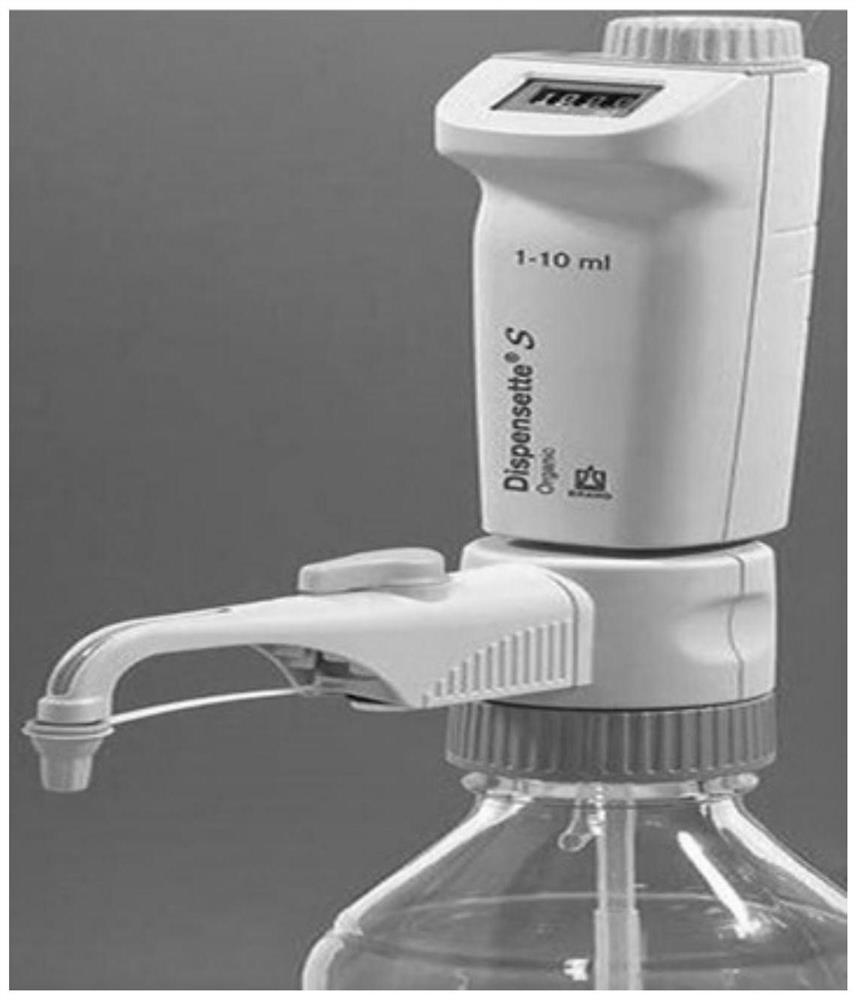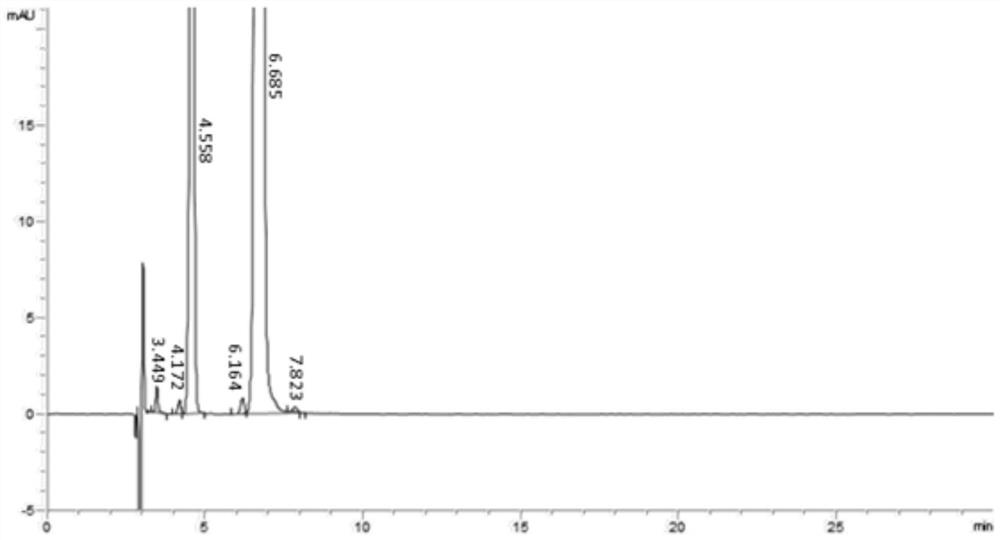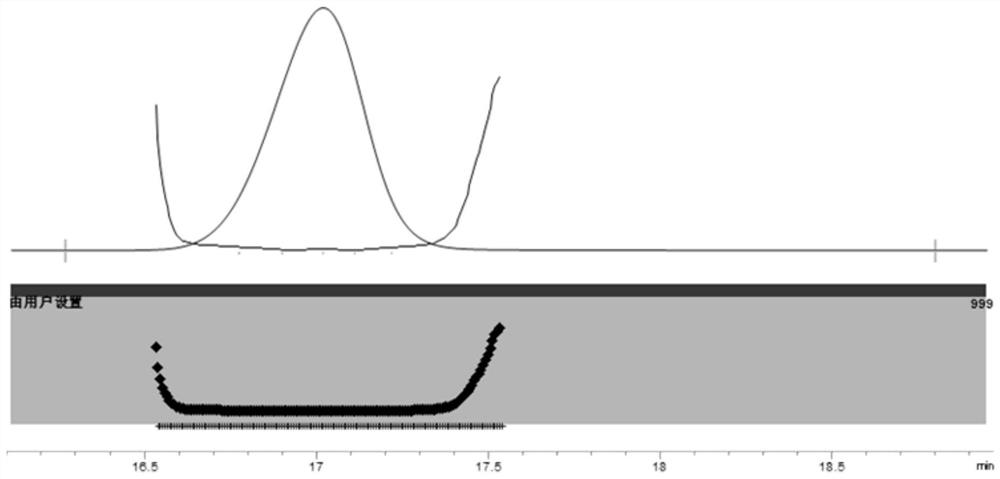Method for detecting purity of organic electroluminescent material
An electroluminescent material, purity detection technology, applied in material separation, analysis materials, measurement devices, etc., can solve problems such as damage to the health of experimenters, increase the risk of solvent volatilization and cross-contamination, and poor operation, so as to reduce environmental pollution. The effect of reducing the risk of cross-contamination and avoiding misjudgment of results
- Summary
- Abstract
- Description
- Claims
- Application Information
AI Technical Summary
Problems solved by technology
Method used
Image
Examples
Embodiment Construction
[0039] The invention provides a method for detecting the purity of an organic electroluminescent material, which is accomplished through the following specific steps:
[0040] 1. Experimental instruments and reagents:
[0041] Agilent-1260 high performance liquid chromatograph equipped with DAD detector; Shimadzu LC-20AD high performance liquid chromatograph equipped with variable wavelength UV detector; BRAND organic bottle dispenser; Mettler Toledo analytical balance ; Millipore ultrapure water machine; 0.45μm organic filter membrane; HPLC grade methanol, dichloromethane; glassware commonly used in other laboratories.
[0042] 2. The organic electroluminescent material is a compound with the following structure:
[0043]
[0044] 3. Sample pretreatment:
[0045] Weigh 10 mg of the sample to be tested before sublimation purification into a glass bottle with a cover, and use a digitally adjustable BRAND organic bottle dispenser (see attached figure 1 ) into 10 mL of dich...
PUM
 Login to View More
Login to View More Abstract
Description
Claims
Application Information
 Login to View More
Login to View More - R&D
- Intellectual Property
- Life Sciences
- Materials
- Tech Scout
- Unparalleled Data Quality
- Higher Quality Content
- 60% Fewer Hallucinations
Browse by: Latest US Patents, China's latest patents, Technical Efficacy Thesaurus, Application Domain, Technology Topic, Popular Technical Reports.
© 2025 PatSnap. All rights reserved.Legal|Privacy policy|Modern Slavery Act Transparency Statement|Sitemap|About US| Contact US: help@patsnap.com



